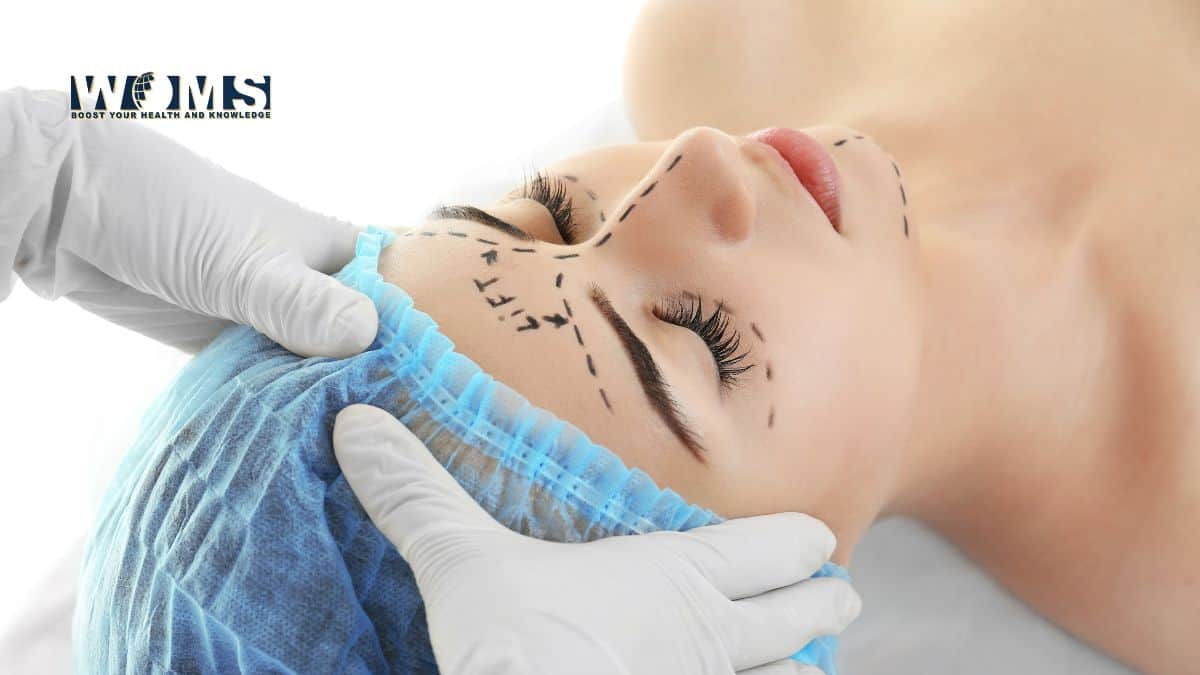The Pros and Cons of Non-Surgical Plastic Surgery

Non-surgical plastic surgery, also known as minimally invasive plastic surgery, refers to procedures that do not require incisions or general anesthesia. These procedures are becoming increasingly popular as they offer a less invasive alternative to traditional plastic surgery, with less downtime and recovery time. In this article, we’ll take a closer look at the pros and cons of non-surgical plastic surgery to help you decide if it’s the right choice for you.
Pros of non-surgical plastic surgery
One of the main advantages of non-surgical plastic surgery is that it is less invasive than traditional plastic surgery. These procedures typically do not require incisions, general anesthesia, or a prolonged recovery time. This makes them an attractive option for people who want to improve their appearance without the risks and downtime associated with traditional plastic surgery.
Another advantage of non-surgical plastic surgery is that it is often less expensive than traditional plastic surgery. This is because non-surgical procedures do not require the use of a surgical facility, general anesthesia, or a prolonged recovery time. This makes non-surgical plastic surgery a more affordable option for many people.
Cons of non-surgical plastic surgery
One of the main disadvantages of non-surgical plastic surgery is that the results are typically not as dramatic as those achieved with traditional plastic surgery. Non-surgical procedures are designed to improve the appearance of the skin, but they cannot change the underlying structure of the face or body. This means that non-surgical procedures may not be appropriate for people who have severe skin sagging, wrinkles, or other issues.
Another disadvantage of non-surgical plastic surgery is that the results are not permanent. Non-surgical procedures typically require multiple treatments to maintain the desired results, and the effects will gradually fade over time. This means that non-surgical procedures may not be the best choice for people who want a more permanent solution to their cosmetic concerns.
A Word of Caution
Before going into specific plastic surgery procedures, it is important to note that before any plastic surgery procedure, in addition to spending proper time researching, you should also consult with credible plastic surgeons. Eventually, the best way to make an educated decision is to speak with a board-certified plastic surgeon. There are various ways to find top plastic surgeons including reading through reviews of plastic surgeons on Yelp and Google and visiting their websites. One easy way to find board-certified plastic surgeons in one place is through the Yes Doctor website, which is an end-to-end platform that services plastic surgery patients for research and discovery of the best options, connecting them to top plastic surgeons, and providing financing options for expensive procedures.
Now we’ll take a closer look at the top non-surgical plastic surgery procedures and discuss the pros and cons of each one, to help you decide if it’s the right choice for you.
Injectable fillers
Injectable fillers, such as Botox and hyaluronic acid fillers, are a popular non-surgical option for addressing wrinkles and fine lines. They work by adding volume to the skin and smoothing out wrinkles and fine lines. Botox is a type of injectable filler that is made from a neurotoxin called Botulinum toxin. It works by temporarily paralyzing the muscles that cause wrinkles, resulting in smoother skin. Hyaluronic acid fillers, such as Juvederm and Restylane, are a type of injectable filler that is made from a naturally occurring substance in the skin. They work by adding volume to the skin, resulting in a more youthful appearance.
Injectable fillers are typically performed under local anesthesia and typically take between 15 and 30 minutes to complete. Recovery time is minimal, and most patients can expect to return to normal activities immediately after the procedure.
Pros
- Non-invasive procedure
- No downtime
- Quick results
- Affordable
Cons
- Results are not permanent
- Multiple treatments may be needed to maintain the desired results
- Results may not be as dramatic as those achieved with traditional plastic surgery
Chemical Peels
Chemical peels are a non-surgical option for improving the appearance of the skin. They work by removing the outer layers of the skin, revealing the smoother, more youthful skin underneath. Chemical peels can be used to address a variety of skin concerns, including fine lines, wrinkles, acne, and age spots.
Chemical peels come in different strengths, from mild to deep. Mild peels, such as glycolic acid peels, are designed to improve the appearance of fine lines and wrinkles, while deep peels, such as phenol peels, are designed to address more severe skin concerns.
Chemical peels are typically performed under local anesthesia and typically take between 30 minutes to 2 hours to complete. Recovery time varies depending on the strength of the peel, but most patients can expect to return to normal activities within a few days to a week.
Pros
- Non-invasive procedure
- Can improve the appearance of fine lines, wrinkles, acne, and age spots
- Can be customized to address specific skin concerns
Cons
- Results are not permanent
- Multiple treatments may be needed to maintain the desired results
- Recovery time varies depending on the strength of the peel
Microdermabrasion
Microdermabrasion is a non-surgical procedure that involves the use of a diamond-tip wand to remove the outermost layer of dead skin cells. This process can help to improve the appearance of fine lines, wrinkles, acne, and age spots, as well as improve the overall texture and tone of the skin.
Microdermabrasion is a gentle procedure that typically requires no downtime, and patients can return to normal activities immediately after the treatment. However, multiple treatments may be needed for optimal results.
Pros
- Non-invasive procedure
- No downtime
- Can improve the appearance of fine lines, wrinkles, acne, and age spots
- Can improve overall skin texture and tone
Cons
- Results are not permanent
- Multiple treatments may be needed for optimal results
- May not be suitable for individuals with severe skin concerns
Laser Skin resurfacing
Laser skin resurfacing is a non-surgical option for addressing a variety of skin concerns, including fine lines, wrinkles, acne, and age spots. It works by using laser energy to remove the outermost layer of skin, revealing the smoother, more youthful skin underneath.
Laser skin resurfacing is typically performed under local anesthesia, and typically takes between 30 minutes to 2 hours to complete. Recovery time varies depending on the strength of the laser used, but most patients can expect to return to normal activities within a few days to a week.
Pros
- Can improve the appearance of fine lines, wrinkles, acne, and age spots
- Can improve overall skin texture and tone
- Can be customized to address specific skin concerns
Cons
- Recovery time varies depending on the strength of the laser used
- Results are not permanent
- Multiple treatments may be needed for optimal results
Thread Lifts
Thread lifts are a non-surgical option for addressing sagging skin on the face and neck. They involve the use of small threads, made of a biocompatible material, which is inserted into the skin to lift and tighten it. The threads are anchored in place, and as the skin heals around them, it tightens and lifts, resulting in a more youthful appearance.
Thread lifts are typically performed under local anesthesia and typically take between 30 minutes to 2 hours to complete. Recovery time is minimal, and most patients can expect to return to normal activities immediately after the procedure.
Pros
- Non-invasive procedure
- Minimal recovery time
- Can improve the appearance of sagging skin on the face and neck
Cons
- Results are not permanent
- Multiple treatments may be needed for optimal results
- May not be suitable for individuals with severe skin sagging
Radiofrequency treatment
Radiofrequency treatment, also known as radiofrequency skin tightening, is a non-surgical option for addressing sagging skin on the face and body. It works by using radiofrequency energy to heat the deeper layers of the skin, stimulating collagen production, and resulting in a tighter, more youthful appearance.
Radiofrequency treatment is typically performed under local anesthesia and typically takes between 30 minutes to 2 hours to complete. Recovery time is minimal, and most patients can expect to return to normal activities immediately after the procedure.
Pros
- Non-invasive procedure
- Minimal recovery time
- Can improve the appearance of sagging skin on the face and body
Cons
- Results are not permanent
- Multiple treatments may be needed for optimal results
- May not be suitable for individuals with severe skin sagging
Ultrasound treatment
Ultrasound treatment, also known as ultrasound skin tightening, is a non-surgical option for addressing sagging skin on the face and body. It works by using ultrasound energy to heat the deeper layers of the skin, stimulating collagen production, and resulting in a tighter, more youthful appearance.
Ultrasound treatment is typically performed under local anesthesia and typically takes between 30 minutes to 2 hours to complete. Recovery time is minimal, and most patients can expect to return to normal activities immediately after the procedure.
Pros
- Non-invasive procedure
- Minimal recovery time
- Can improve the appearance of sagging skin on the face and body
Cons
- Results are not permanent
- Multiple treatments may be needed for optimal results
- May not be suitable for individuals with severe skin sagging
In conclusion, non-surgical plastic surgery offers a less invasive alternative to traditional plastic surgery with less downtime and recovery time. However, it’s important to have realistic expectations and to consult with a board-certified plastic surgeon before deciding if non-surgical plastic surgery is the right choice for you. Each procedure has its own set of advantages and disadvantages, and it’s important to consider these factors before deciding which procedure is best for you. It’s also important to keep in mind that non-surgical procedures may not be able to achieve the same results as traditional surgery and that multiple treatments may be needed for optimal results.




